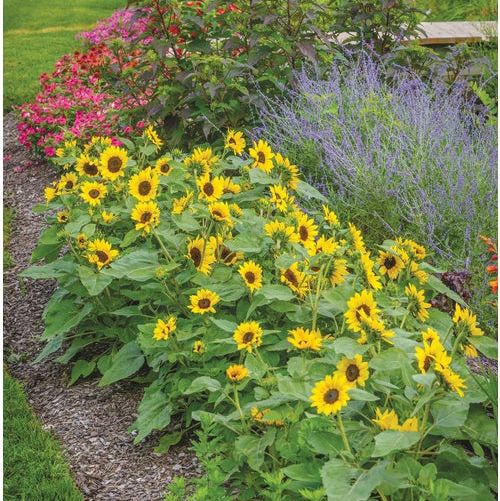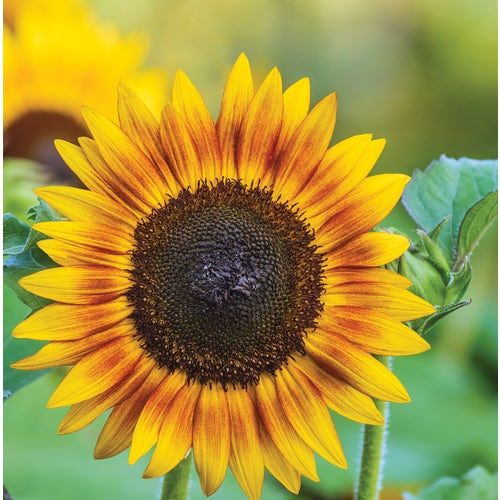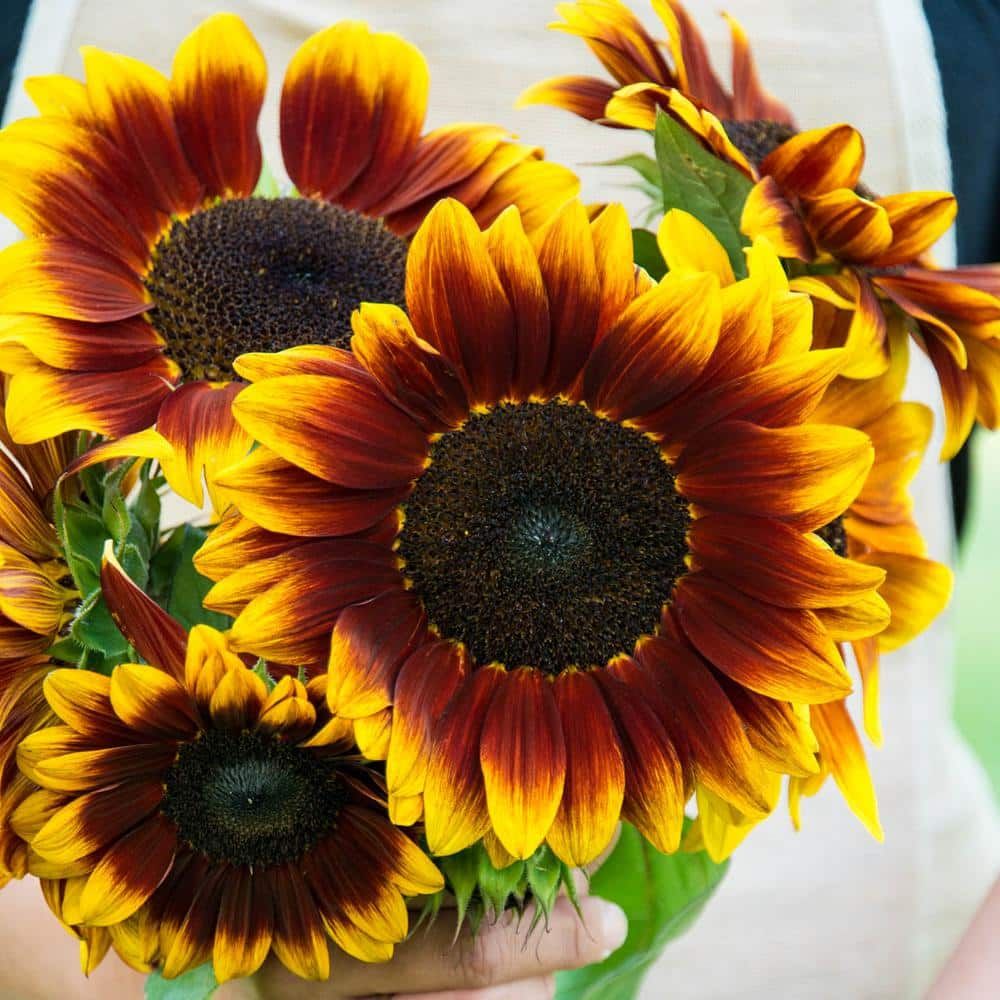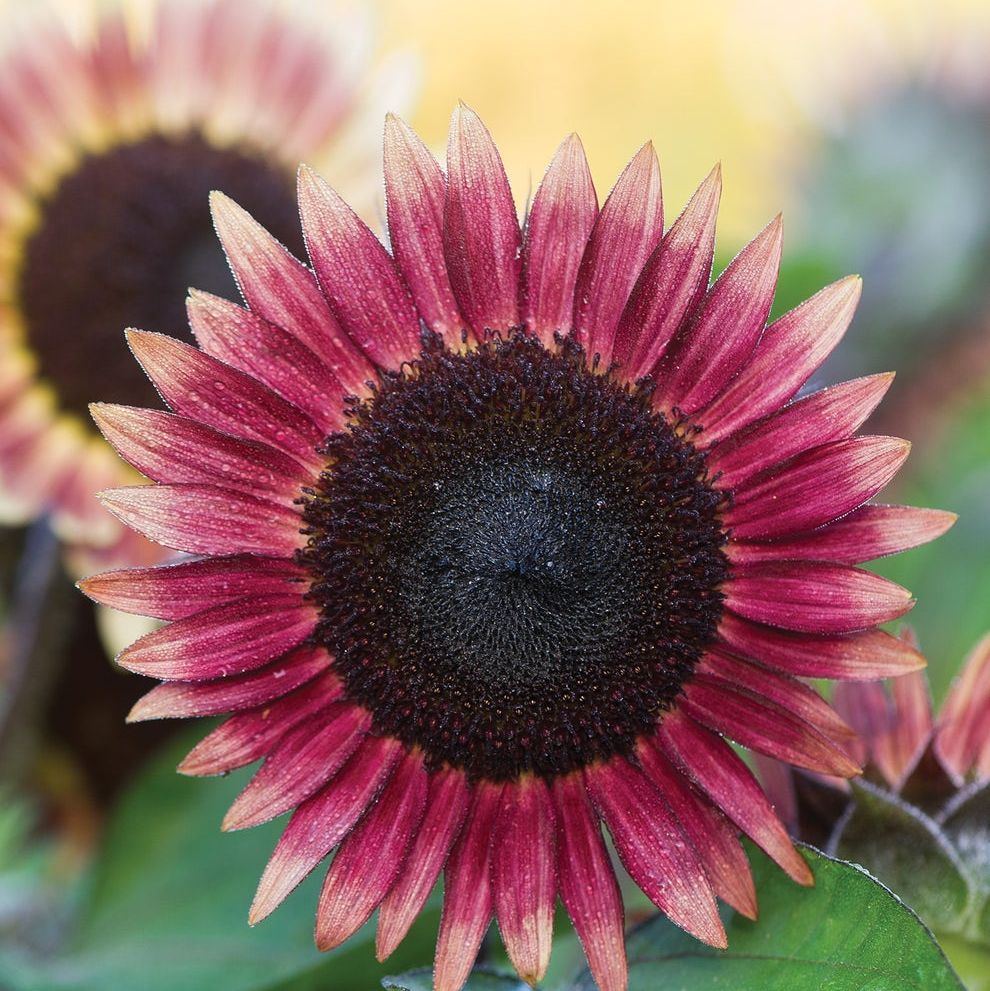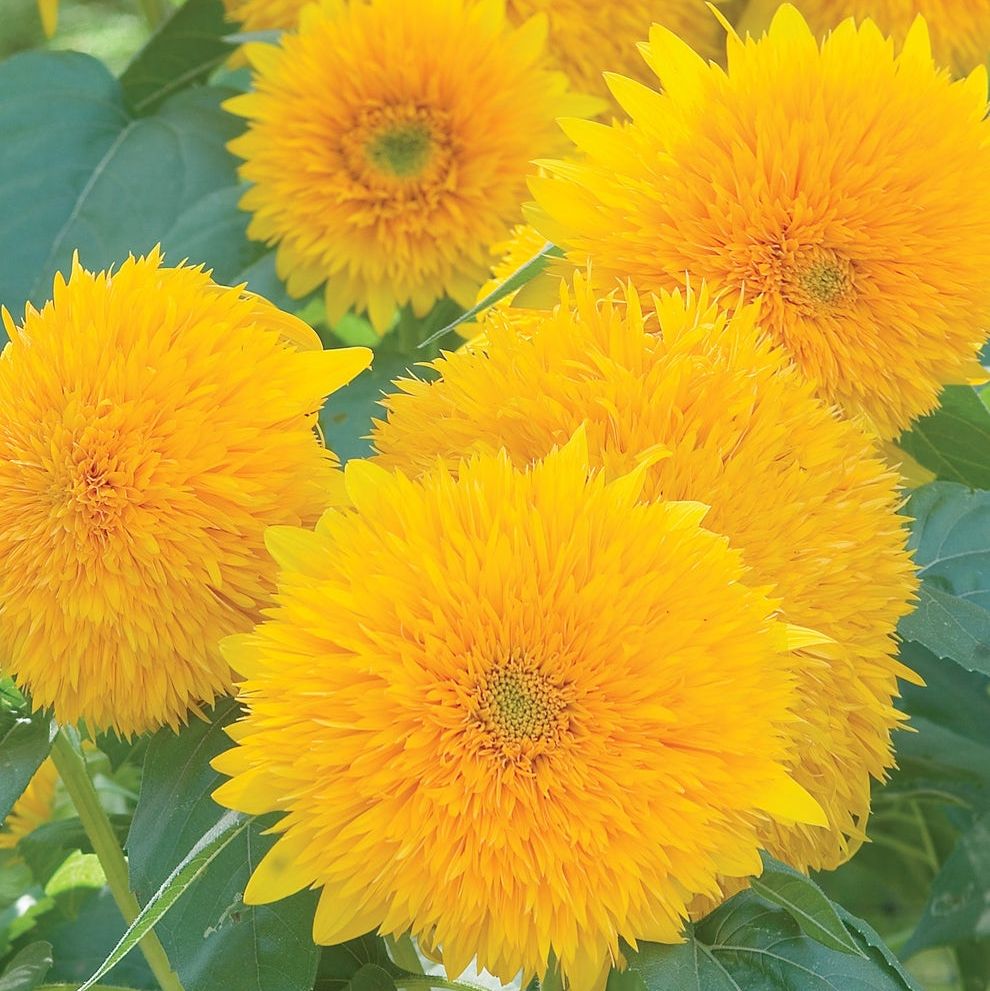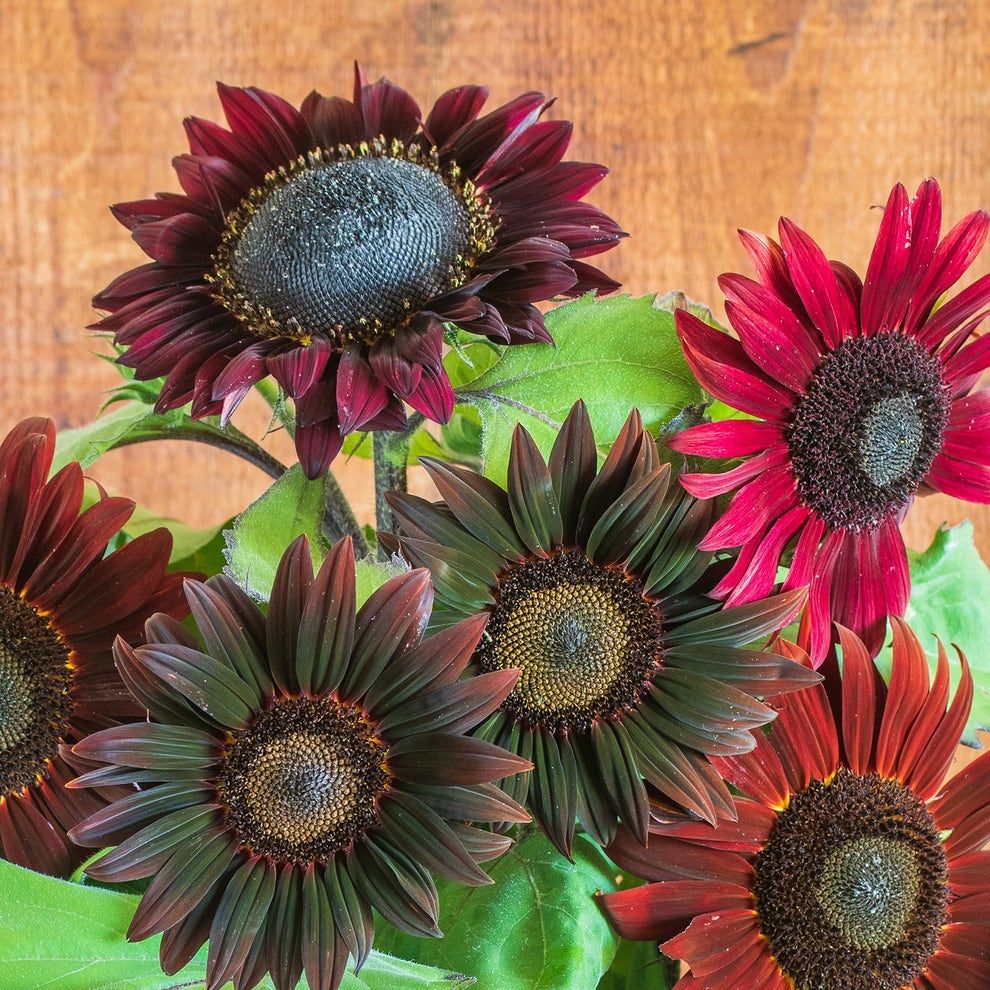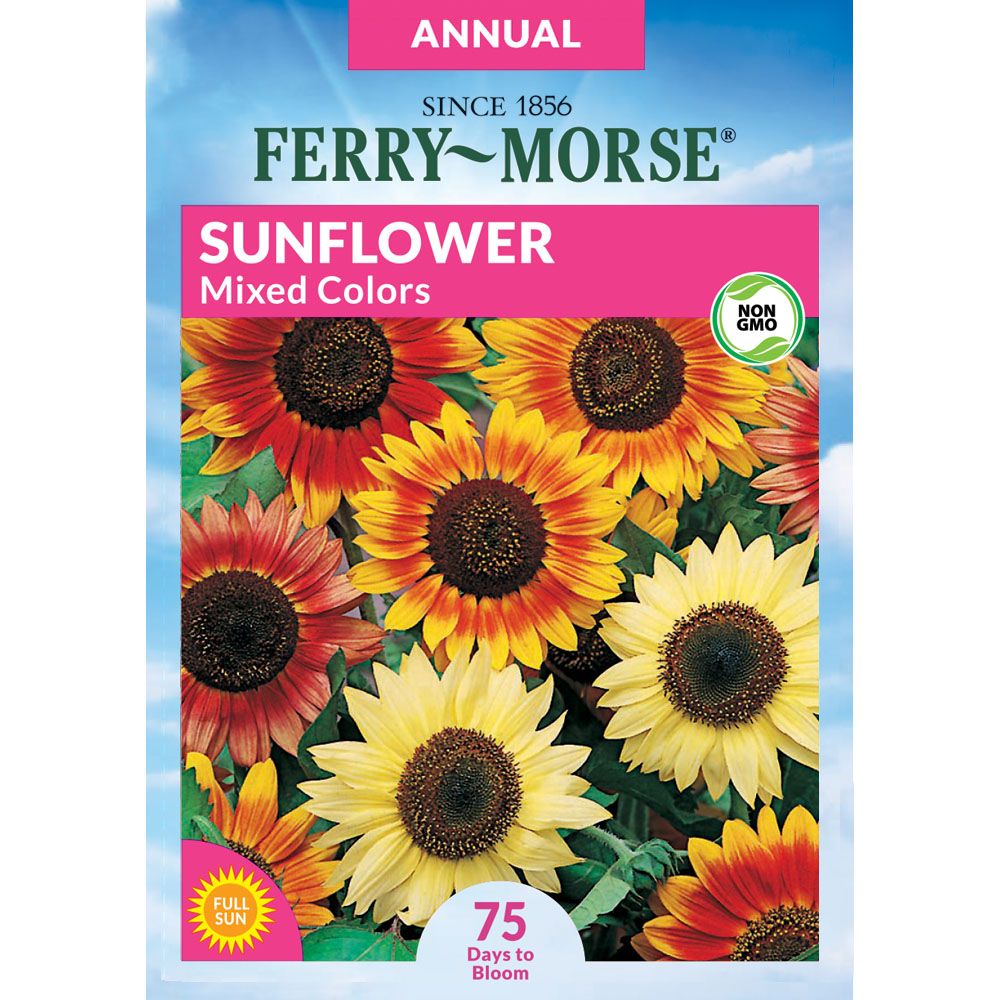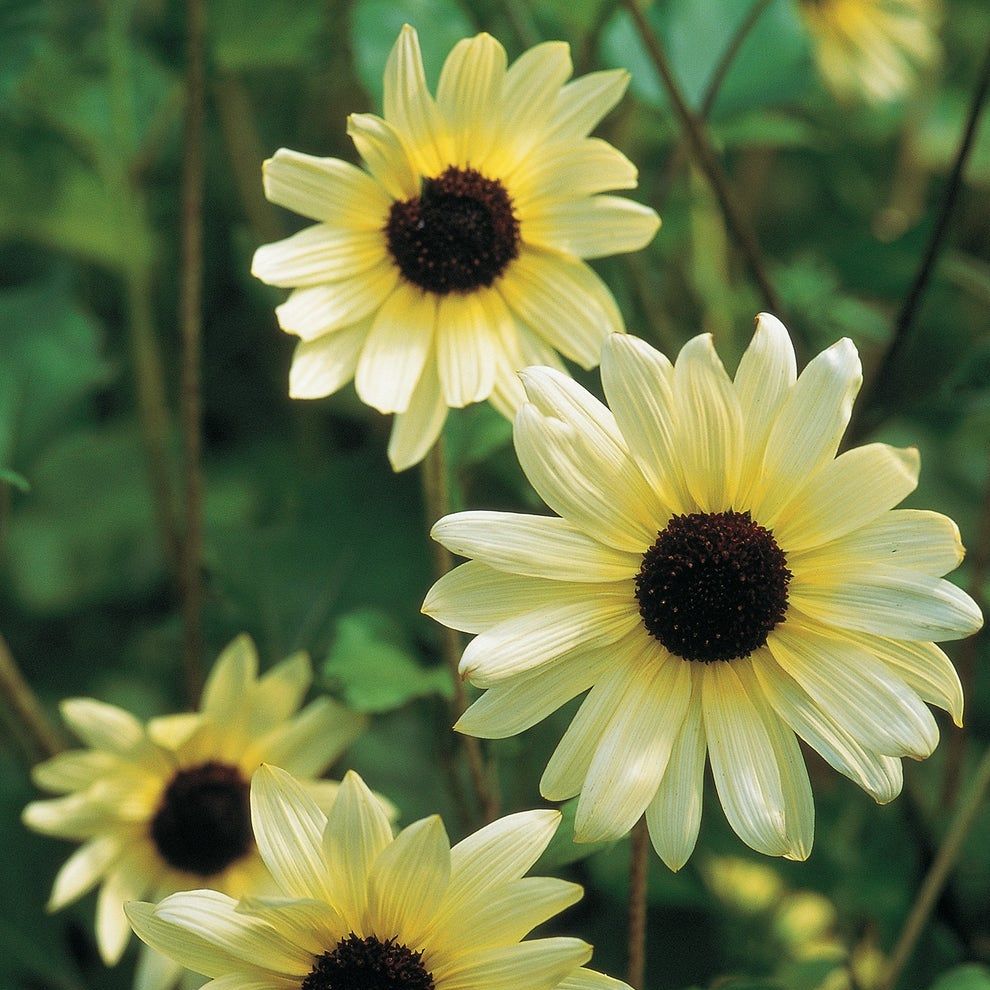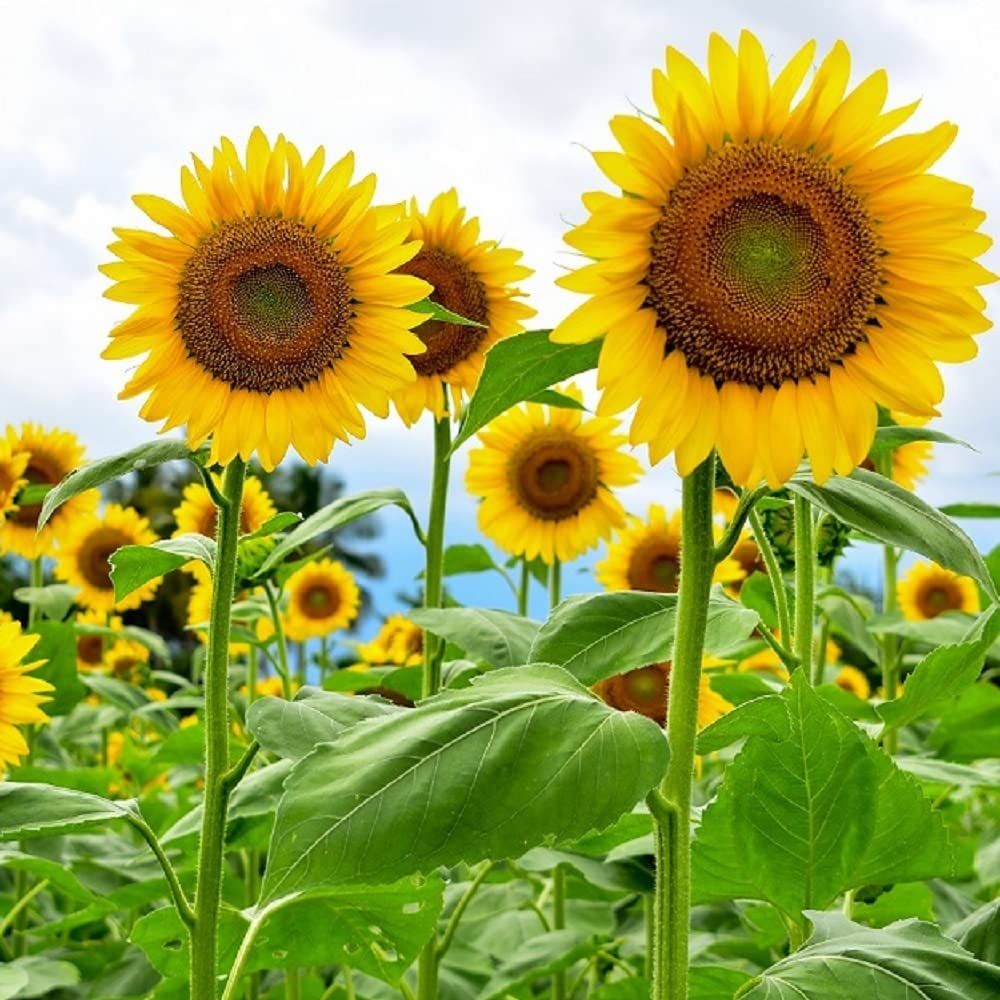Sunflowers are cheerful blooms that come in an array of forms and colors. They range in size from petite flowers a foot tall to giants that reach 10 feet tall, so there’s a variety for every garden. Although you’re probably familiar with the classic sunny yellow sunflower, many new varieties have been introduced in recent years with hues ranging from apricot and deep red to bright orange and chocolate brown.
Pollinators adore these cheerful flowers, so they’re a wonderful addition for attracting all types of pollinators to your yard. Bees especially love sunflowers late in the growing season when many other flowers have begun to fade.
Many types of sunflowers have multiple stems, so they make great flowers for a cutting garden, too. They also exhibit a fascinating phenomenon called heliotropism, meaning they turn their head to face the sun throughout the day.
Sunflowers are ridiculously easy to grow from seed, but knowing when to plant sunflowers is important. Because they’re not frost tolerant, you’ll need to wait until temperatures warm up in your area. You can sometimes find seedlings at garden centers, but they can be finicky about being transplanted so it’s better to sow seeds directly into your garden when the time is right. Here’s exactly when to plant sunflowers for big, beautiful blooms.
When to Plant Sunflowers
Wait to plant seeds until all danger of frost has passed in your area. That can be any time from early April to late May, depending on where you live. Check with your local university coop extension service to get an estimate of the date (find yours here). You can plant seeds every week over the course of several weeks to extend your growing season.
The latest you can plant sunflowers in your garden depends on the variety you choose. Read the seed package or description to see how long it will take for your sunflower to bloom after planting. This can range from 50 to 120 days.
If you plant too late in the season for a type that has a long period to maturity, you may not get flowers before the first frost. Generally, late July is the latest you can plant sunflowers in most of the country in order to enjoy blooms before the first frost.
How to Plant Sunflower Seeds
Find the sunniest spot in your garden because sunflowers need at least six or more hours of direct sunlight per day. This is one time when more is better: If you have a spot with eight hours of sun, they’ll be even happier! They will not bloom in shade.
Poke a hole directly in the soil, then push seeds in about an inch deep. Water regularly until the baby plants pop up. They’re drought tolerant once established, but water them if there’s a dry spell. And make sure to weed so the tiny seedlings aren’t competing for water and nutrients.
If you have garden visitors such as chipmunks and squirrels, you should protect your seeds. Cover the area with a cage made from chicken wire, which will discourage digging. You also can start seeds indoors a few weeks before planting time because rodents will be less likely to dig up seedings that are 6 or 7 inches tall.
Deer also like nipping off young sunflower heads before they fully develop. If Bambi visits your garden, wrap protective bird netting around each seed head as it begins to develop. Or erect a fence that’s at least five feet tall to keep deer away from your sunflowers—and the rest of your garden.
How to Care for Sunflowers
Sunflowers are low-maintenance plants. The most you’ll need to do is keep the area weeded, water if there’s a dry spell of more than a week, and wait for flowers! You also can fertilize with an all-purpose extended release granular fertilizer, if you like. Tall varieties may benefit from staking as the plants become heavy with the seedhead.
When to Harvest Sunflowers for Seeds
When the heads start to nod downward, you can cut off the entire sunflower, taking about a foot of stem. You can hang the flower upside down in a warm place to dry. After a few weeks, rub your hands over the surface of the flower to harvest seeds, which should fall out easily. Or you can leave your sunflowers in place for the birds in your garden.
Can You Grow Sunflowers in Pots?
You can grow the petite varieties of sunflowers in pots, but the giant types will not do well because they will not have enough space for their deep roots. As sunflowers mature, the pots also tend to topple over as they become top-heavy.
Do Sunflowers Come Back Every Year?
Sunflowers are annuals, so they live for only one season. However, they’re so easy to grow, that it’s not a big deal to plant them every spring! Or you can look for varieties that are perennials, such as ‘Maxmillian,’ which will come back for several years.
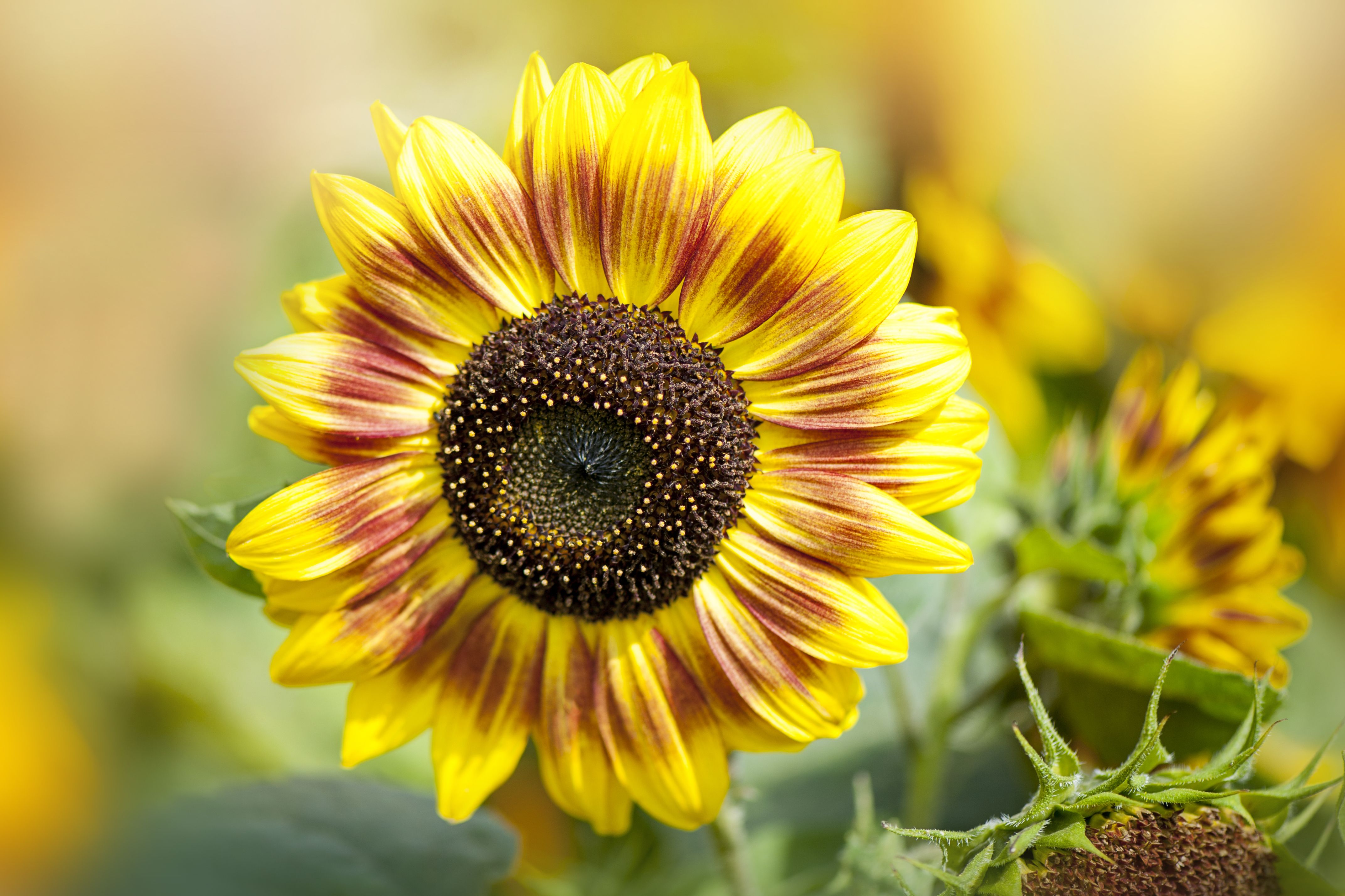 Jacky Parker Photography//Getty Images
Jacky Parker Photography//Getty Images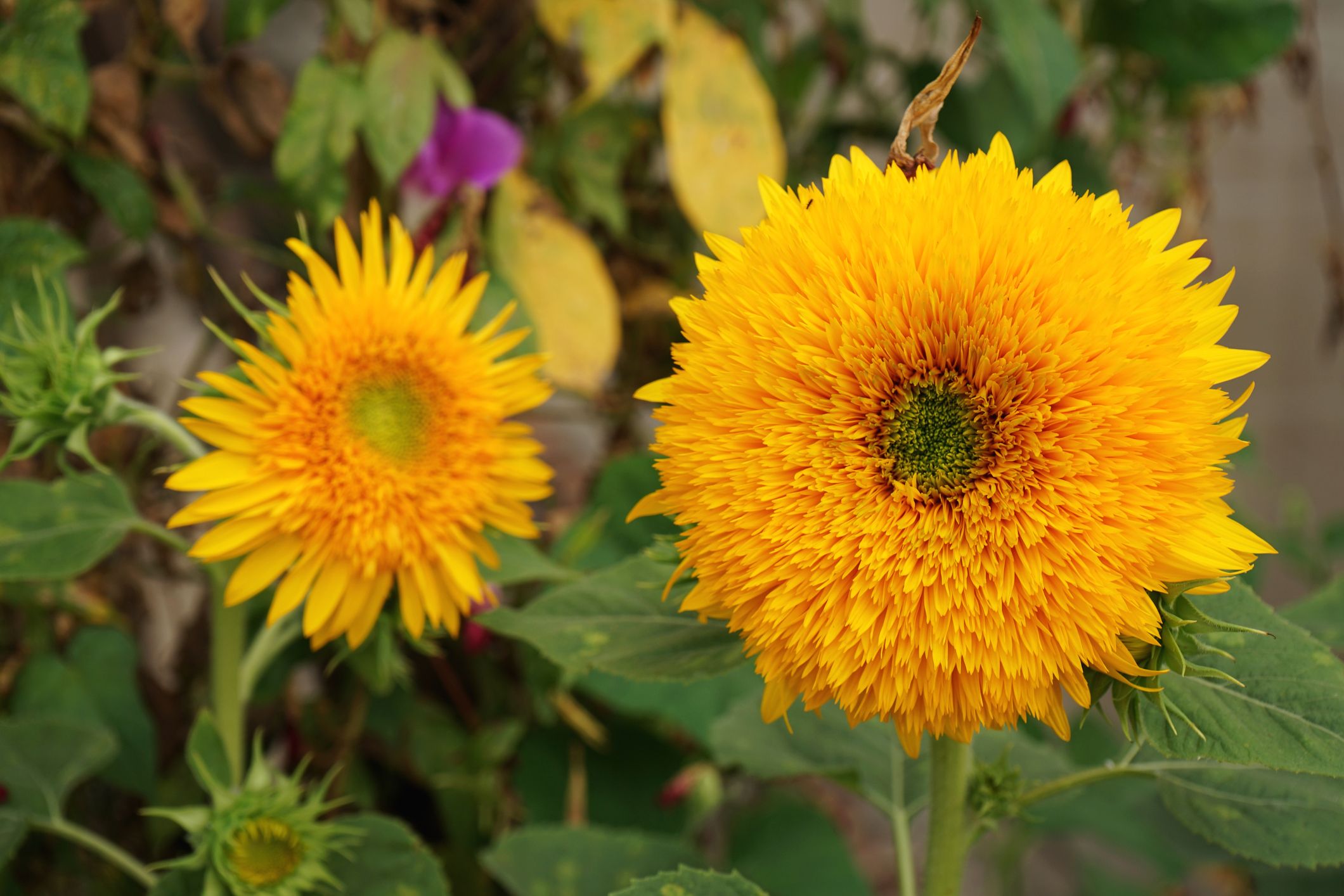 Sundaemorning//Getty Images
Sundaemorning//Getty Images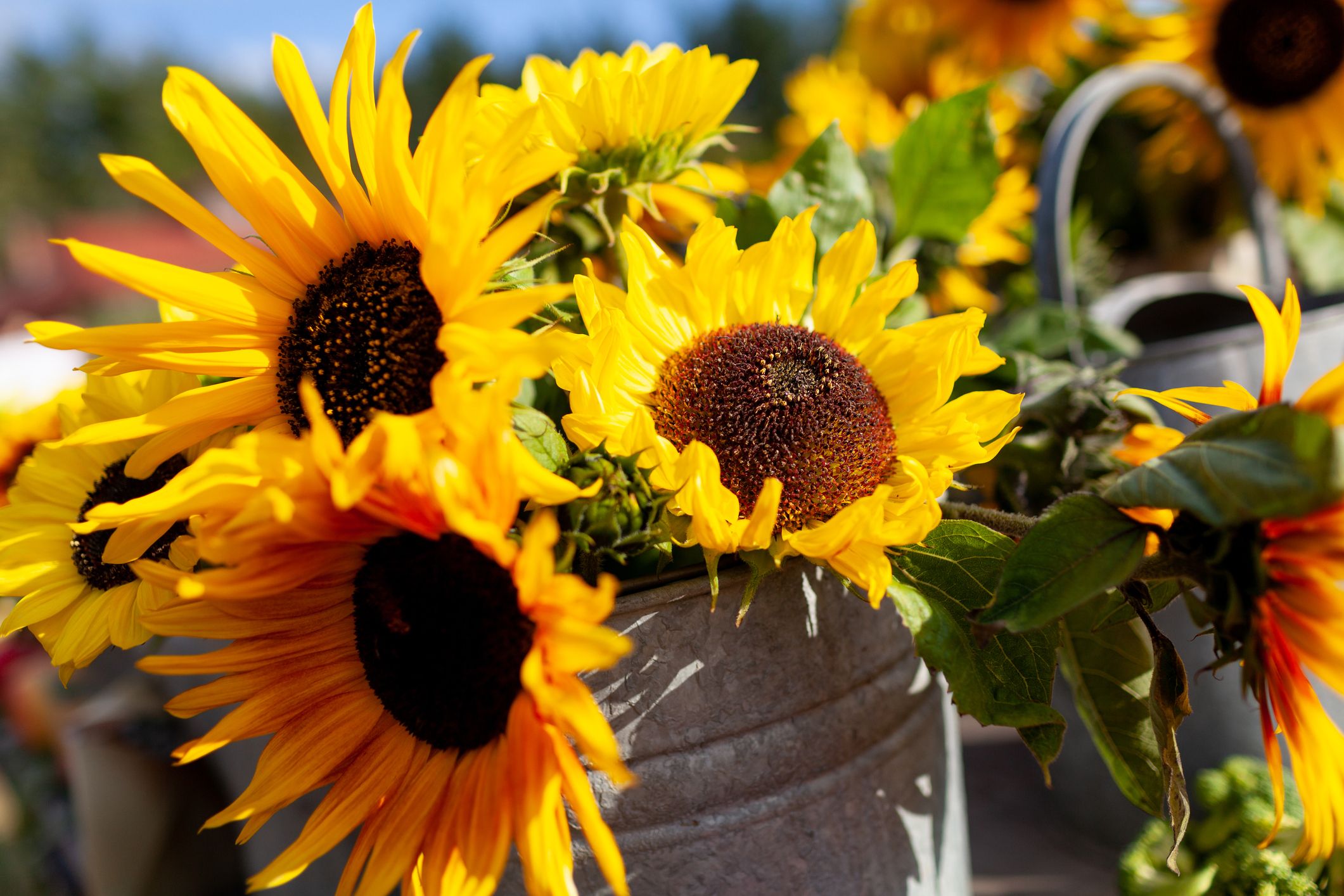 Kevin Trimmer//Getty Images
Kevin Trimmer//Getty Images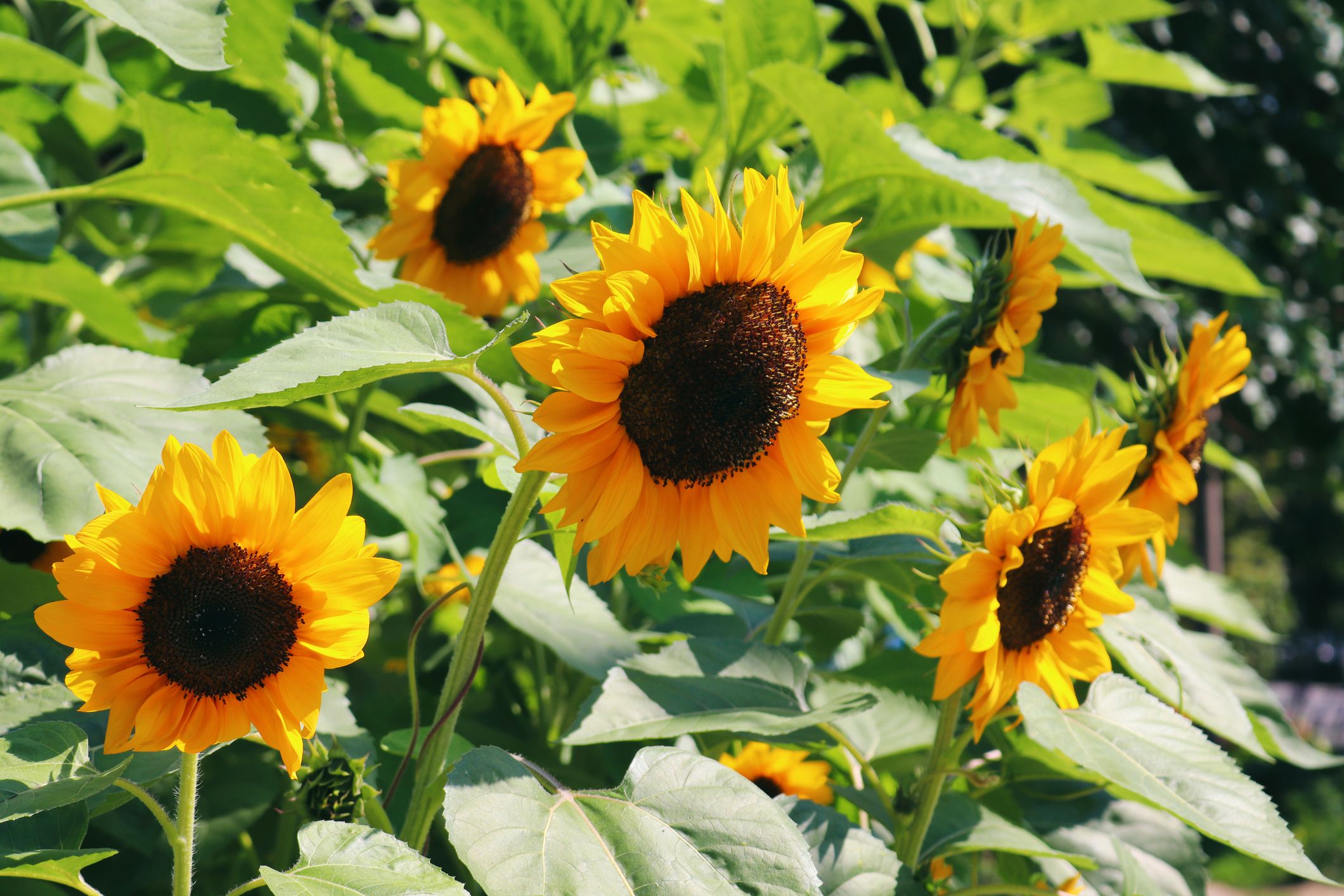 Katrin Ray Shumakov//Getty Images
Katrin Ray Shumakov//Getty Images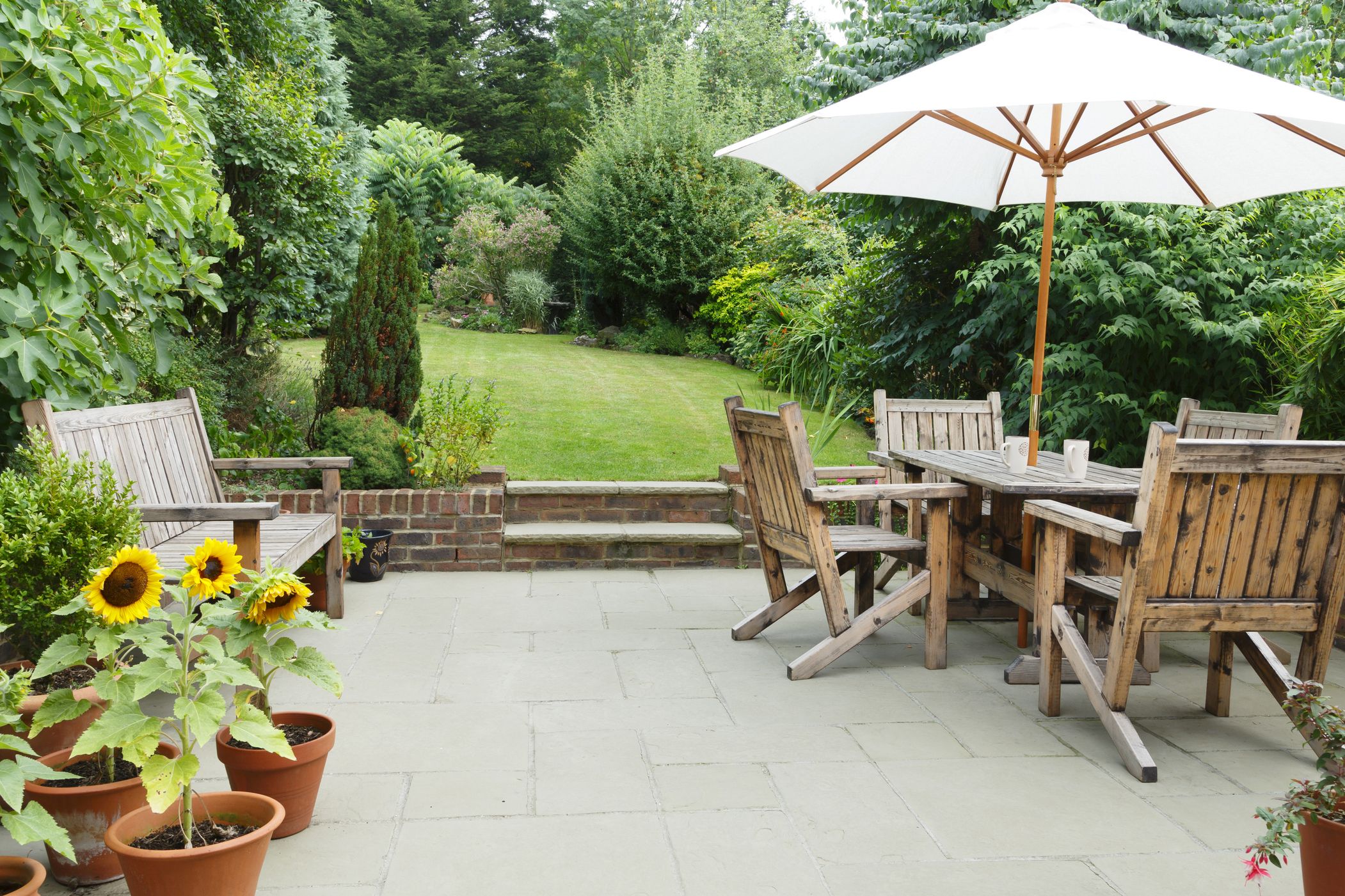 PaulMaguire//Getty Images
PaulMaguire//Getty Images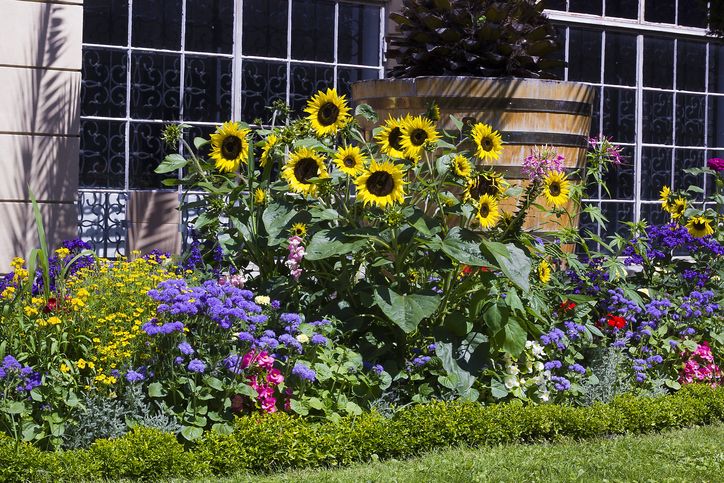 dmf87//Getty Images
dmf87//Getty Images